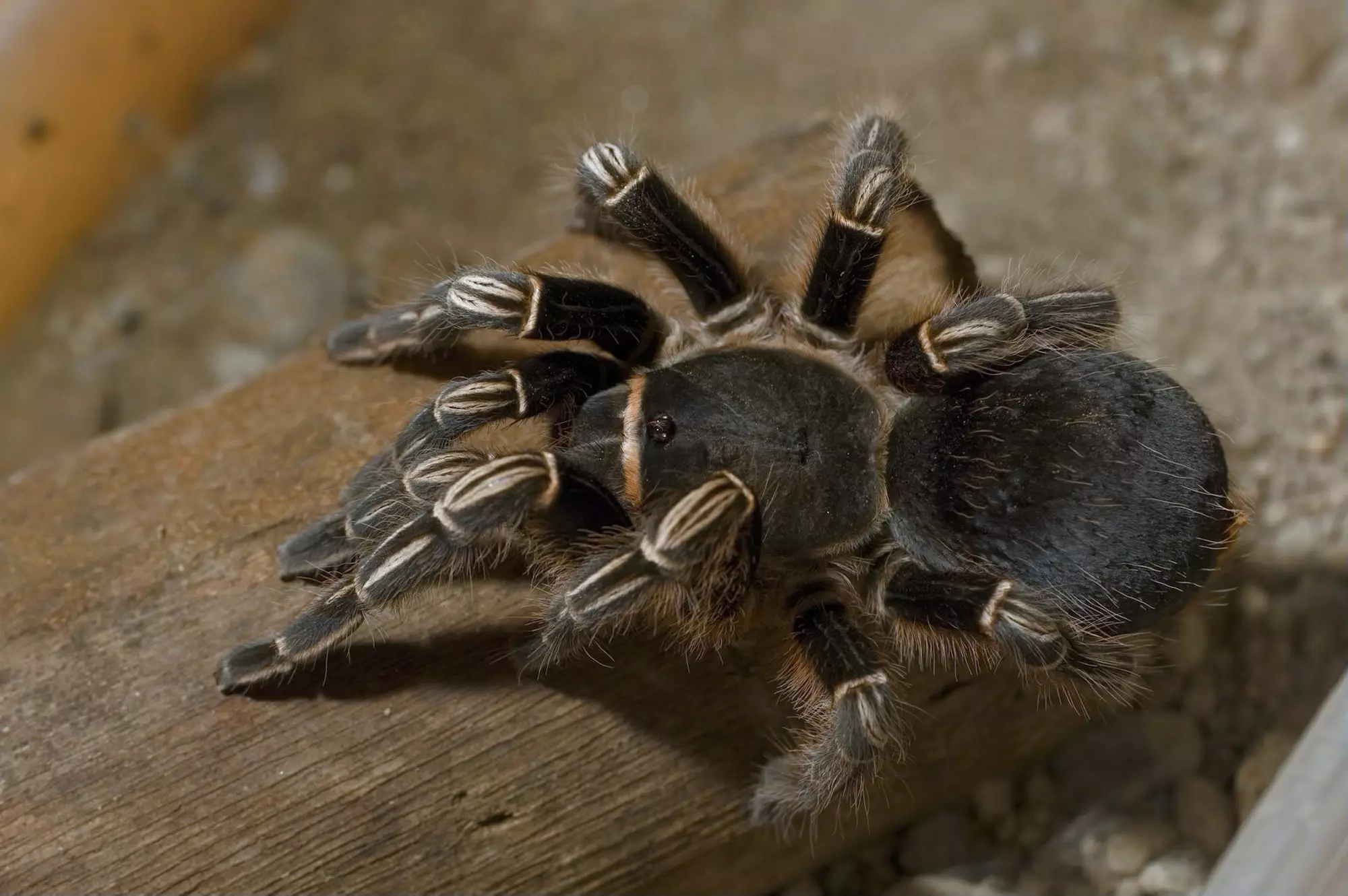The Costa Rican zebra tarantula, scientifically known as *Aphonopelma seemanni*, is a captivating spider that has garnered attention among enthusiasts and pet owners alike. Renowned for its striking appearance and relatively manageable care requirements, this species can be an excellent choice for seasoned tarantula keepers. However, it also possesses unique characteristics that potential owners should thoroughly understand before adopting one.
With an impressive leg span of 4 to 5 inches, the Costa Rican zebra tarantula showcases a beautiful black body adorned with deep red hairs and distinctive white stripes across its legs. Its colorful orange spinnerets add to its visual appeal, making it a favorite among collectors. In terms of habitat, these spiders flourish in a diverse environment that mimics their natural surroundings. A tank size between 5 to 10 gallons is ideal, ensuring that the length is at least three times the spider’s leg span. Properly equipping the enclosure with climbing structures, such as fake plants or cork bark, allows the tarantula to express its natural behaviors, while a suitable substrate of peat moss or vermiculite provides comfort and humidity.
Maintaining the right microclimate is essential for the well-being of the Costa Rican zebra tarantula. Ideally, the habitat should remain between 70 to 85 degrees Fahrenheit and have a humidity level of around 75 to 80 percent. It’s crucial to monitor these conditions, as excessive dryness or temperature fluctuations can lead to stress or health issues. Regular habitat cleaning and maintenance—about a few hours each week—are necessary to ensure a sanitary living environment for your spider. With minimal interaction needs, these tarantulas are solitary creatures, preferring to be alone rather than sharing their space with other pets.
While the Costa Rican zebra tarantula is generally docile, its skittish nature and agility can pose challenges for handling. These spiders are known for their swift movements; therefore, new owners should approach them with caution. Being startled may lead the tarantula to flee or defensively respond by flicking irritating urticating hairs or, in rare cases, biting if they feel threatened. Given these defense mechanisms, it is critical to wash hands thoroughly after handling the spider or cleaning its environment, especially to prevent any accidental contact with the eyes.
Moreover, it is advisable to minimize handling; if you choose to do so, ensure that it is done under secure conditions (such as on a soft surface) and preferably by individuals who have experience with temperamental spiders. Numerous owners report that, with gradual familiarization, some Costa Rican zebra tarantulas can adapt to gentle handling, but this is not guaranteed and should always be approached with care.
Being natural roamers, these spiders thrive on a diet of live prey, predominantly crickets. Adult tarantulas typically consume these insects every one to two weeks, while juveniles may require feeding every couple of days. It’s imperative to remove uneaten prey promptly to avoid stressors (including bullying and hindering movement) and to maintain hygiene within the enclosure. Owners may also consider supplementing their diets with pinky mice for a nutritional boost, though it is crucial to consult with an exotic vet to ensure that feeding schedules align with the individual spider’s age and size.
A shallow water dish should always be available, serving both as a drinking source and humidity regulator. This dish must be monitored and refreshed daily to promote a healthy environment.
As with any pet, the health of a Costa Rican zebra tarantula should be a priority. These spiders are generally robust; however, they are susceptible to health issues arising from improper care or environmental stress. Signs such as refusal to eat, unusual lethargy, or abnormal physical presentations may indicate health problems that require professional attention. It is worth noting that not all veterinarians are versed in treating exotic animals, so prospective tarantula owners should identify local veterinarians who specialize in exotic species before making a purchase.
Purchasing a Costa Rican zebra tarantula often ranges between $20 and $40, with females typically being more expensive due to their longer lifespans. While potential owners can find these spiders in pet stores, sourcing from reputable breeders or rescue organizations is recommended. This helps guarantee that the animal has been properly cared for and conveys accurate information regarding its health and lineage.
For those inclined to explore other pet spider options, it is beneficial to familiarize oneself with different tarantula species that may better suit individual preferences or experience levels. In doing so, one can broaden their understanding of the complexities involved in exotic pet ownership.
While the Costa Rican zebra tarantula makes for an intriguing and low-maintenance pet for seasoned spider enthusiasts, successful ownership requires a thorough understanding of its environmental needs, behavioral traits, and health care considerations. With proper diligence and respect for the spider’s instincts, this beautiful creature can thrive in captivity, providing its owner with a profound and fascinating companionship.


Leave a Reply